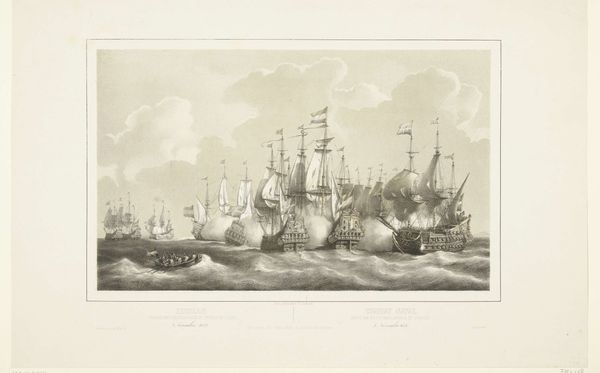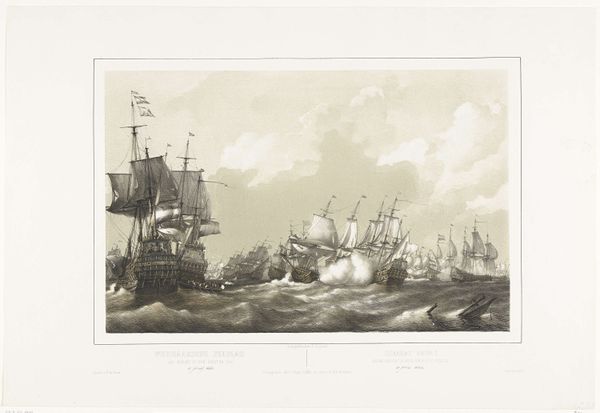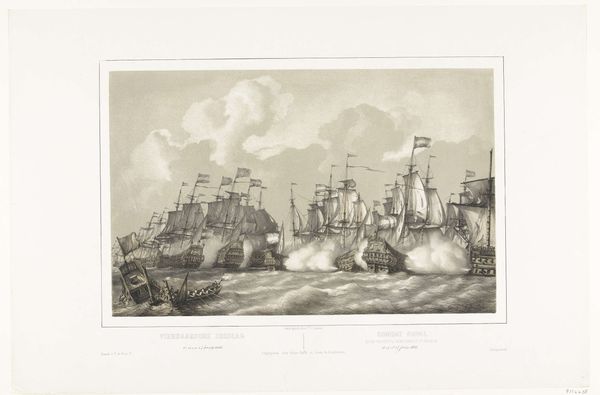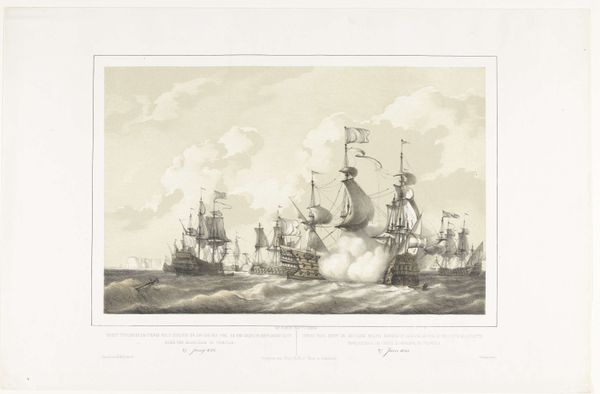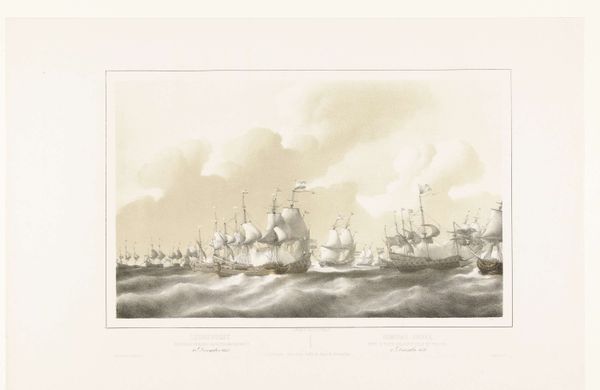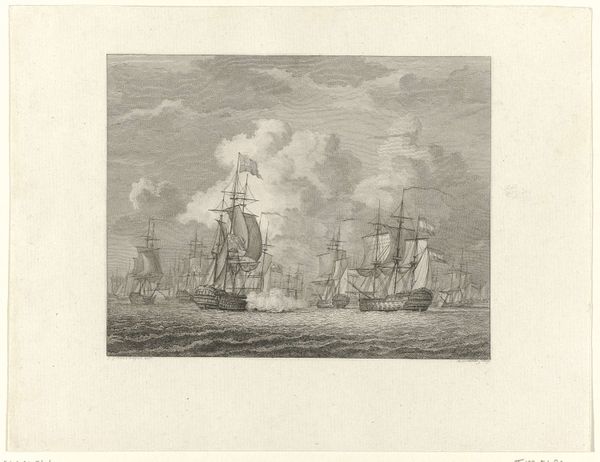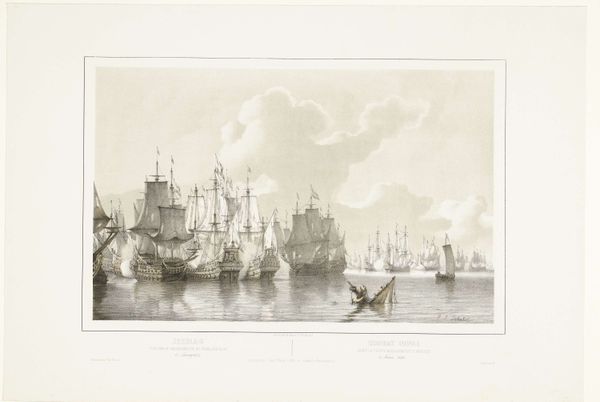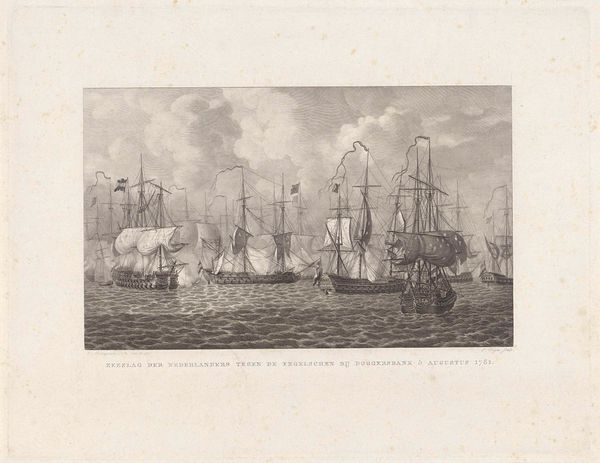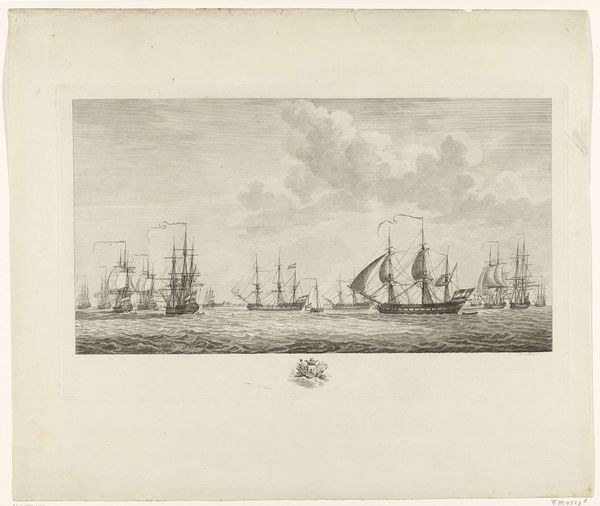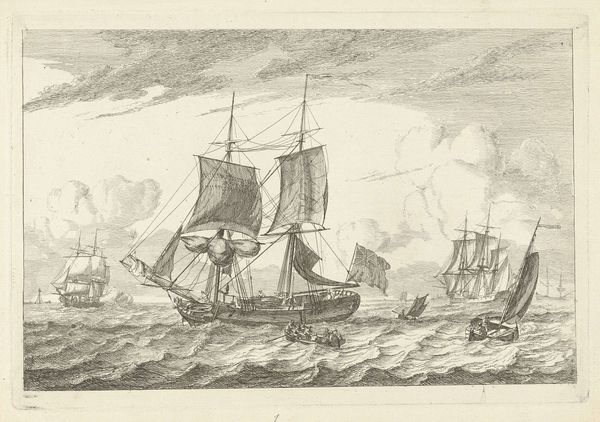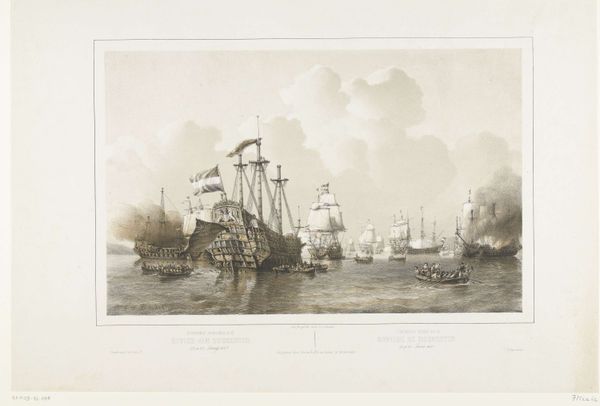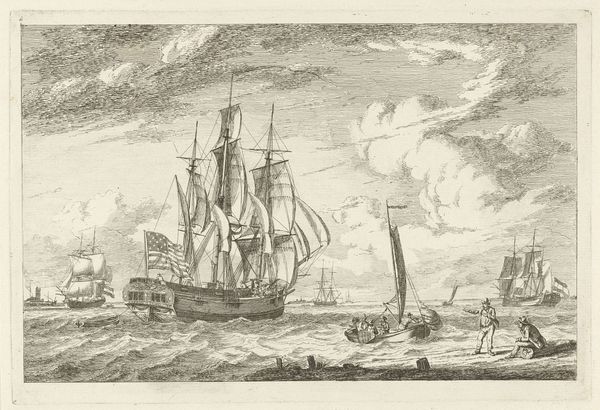
Zeeslag tussen enige Nederlandse en Franse schepen, 1703 1848 - 1855
0:00
0:00
Dimensions: height 360 mm, width 549 mm
Copyright: Rijks Museum: Open Domain
Editor: Here we have Petrus Johannes Schotel's "Zeeslag tussen enige Nederlandse en Franse schepen, 1703", a drawing and engraving created sometime between 1848 and 1855. I'm struck by the contrast between the delicate medium – pencil and engraving – and the chaotic subject of a naval battle. It's incredibly detailed! What captures your attention in this piece? Curator: What's interesting to me is how Schotel, painting in the 19th century, represents a battle from 1703. This wasn't a contemporary scene, but rather a deliberate reconstruction of a past event. Think about what this means: by the mid-19th century, Dutch naval power had long declined from its Golden Age peak. How might an image like this function within the context of a changing national identity? Editor: So, it’s not just a historical record but maybe a nostalgic look back at a time of greater power? Curator: Precisely! The Rijksmuseum, where this work resides, was itself founded in 1800, a period of considerable upheaval and reinvention of Dutch identity. Consider how maritime paintings like this might have served a particular function, visually reinforcing national pride in the face of a shifting geopolitical landscape. Does the realism depicted, though created long after the fact, lend authority to this narrative? Editor: It definitely feels more impactful seeing it rendered so realistically, like it’s actually capturing a real event, even though it’s reconstructed. The waves look so powerful! Curator: Right. The drama, rendered in careful detail, served a very specific socio-political purpose: reminding viewers of past glories. And how do museums perpetuate these intended interpretations even now? Editor: I guess that placing it in a museum like the Rijksmuseum kind of seals that deal, it makes the painting’s historical significance feel official. It gives it a certain weight. It is so cool to consider all the layers of meaning behind this artwork, it’s not just ships at sea. Curator: Exactly. It reveals how images are carefully curated to shape collective memory and national narratives. The play between the past and present in creating these narratives is crucial.
Comments
No comments
Be the first to comment and join the conversation on the ultimate creative platform.
